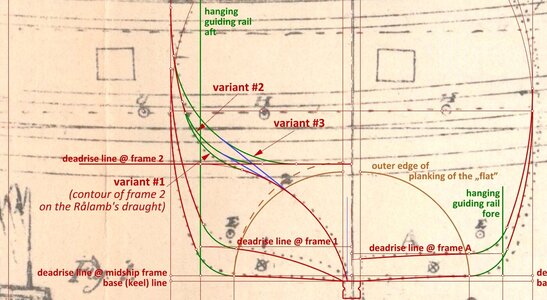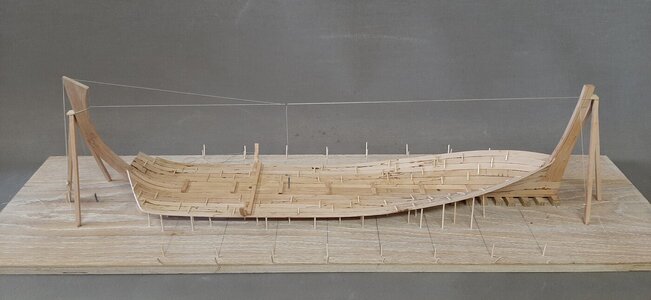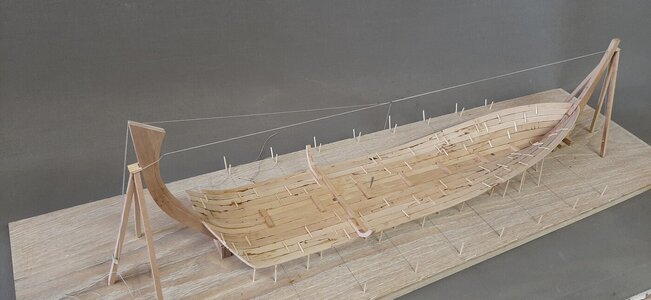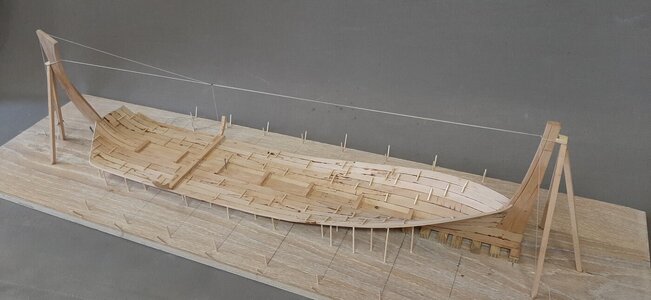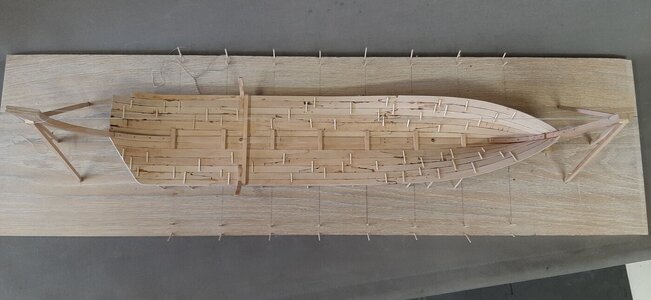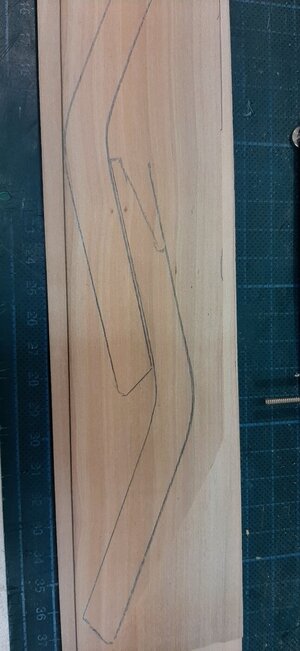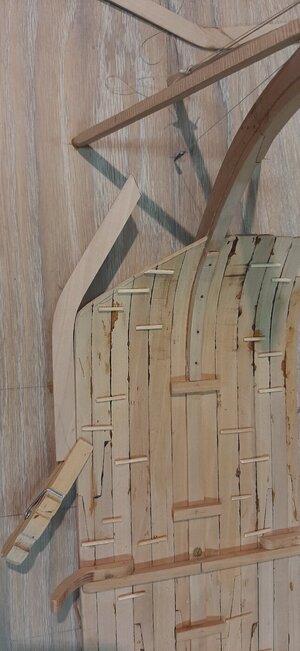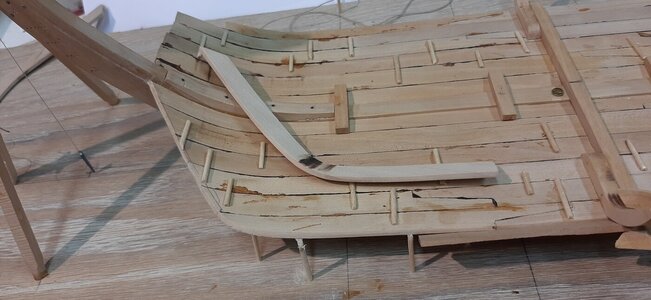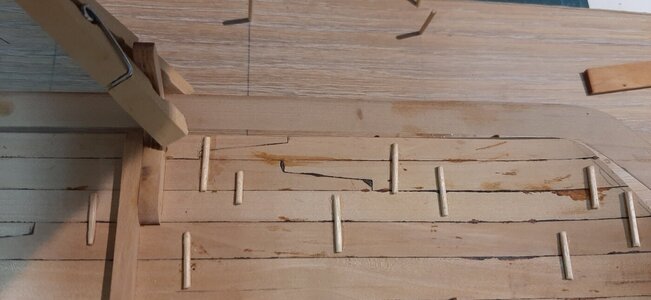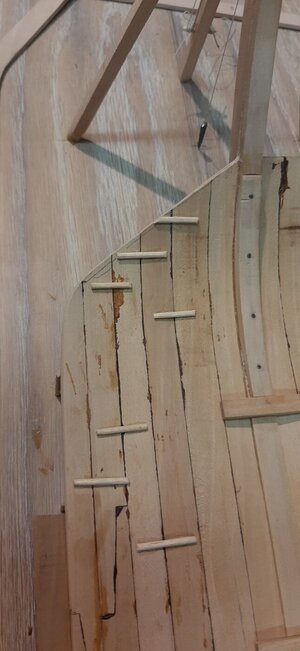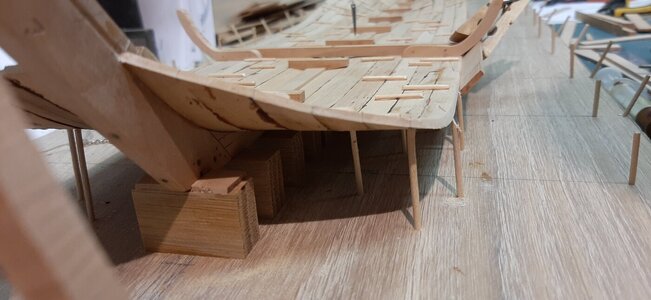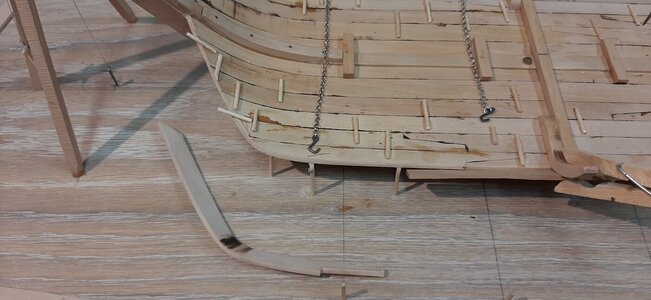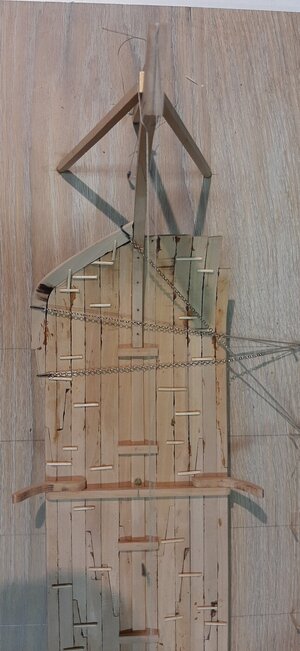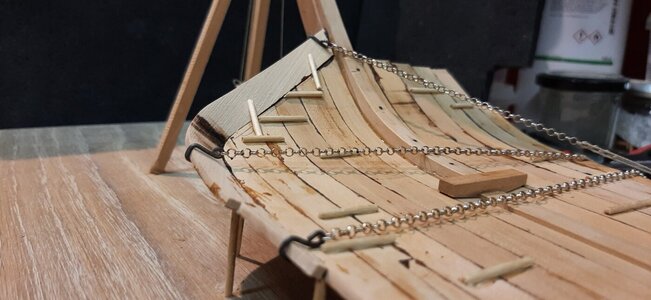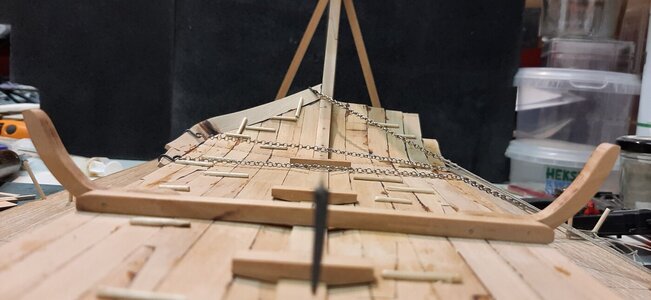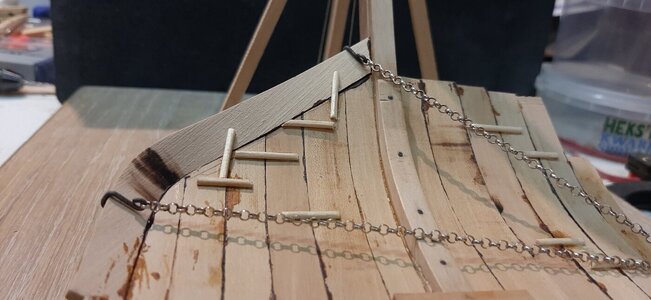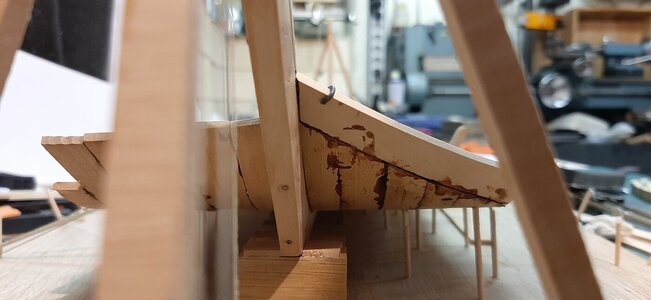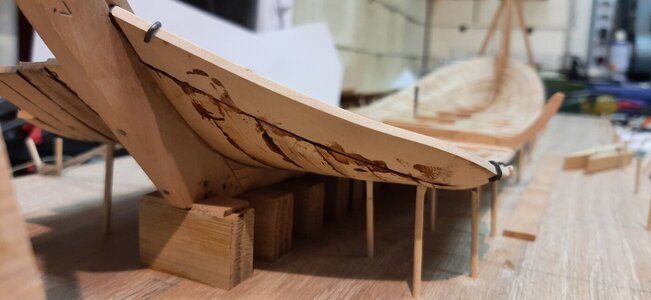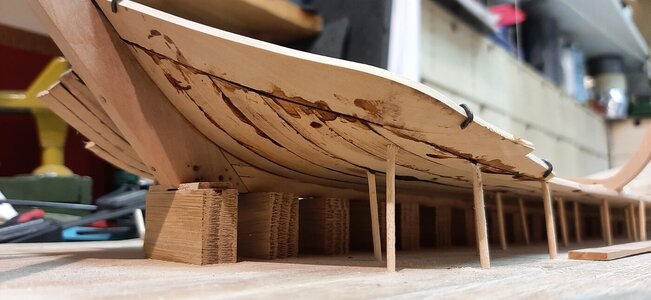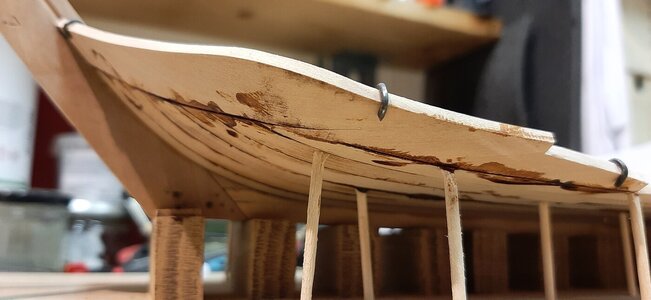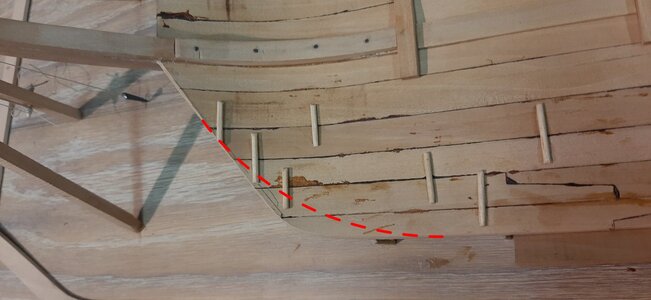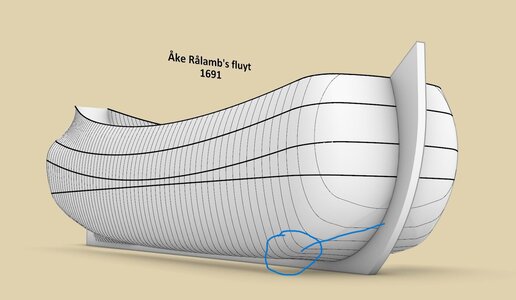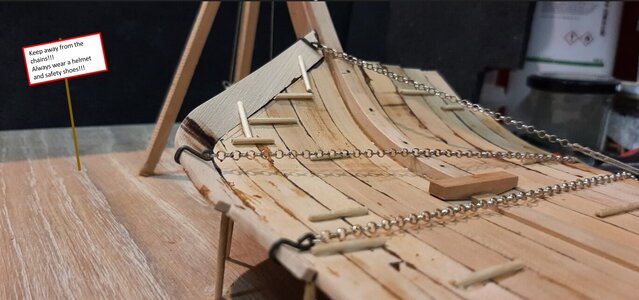.
Hello again,
I assume that this is the effect, as below, that you intend to get, more or less. I have prepared two samples, based on Rålamb's fluit and boyer, both sporting very full, boxy hull. This is a bit of a simplification (all planking boards are of equal width and there are no optional stealers), but the hopes are that for illustrative purposes these should be sufficient.
Note that the outer edge of the 'flat' has a smooth, gentle shape in these samples, without a sharp kink as you have done in your model. Despite of that, or perhaps more correctly – thanks to such a shape, the planking boards terminate at about a 45-degree angle on the stem or the wale, exactly as you supposedly plan to do. But it's best that you judge these shapes and the correlation of these lines yourself.
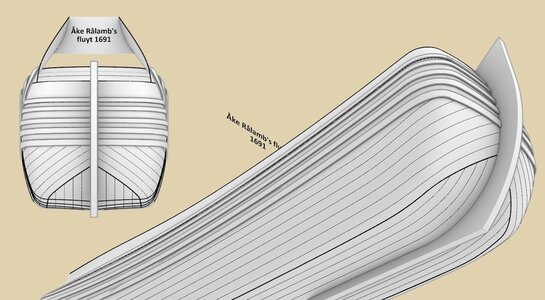
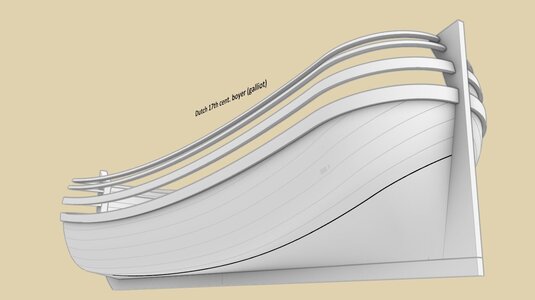
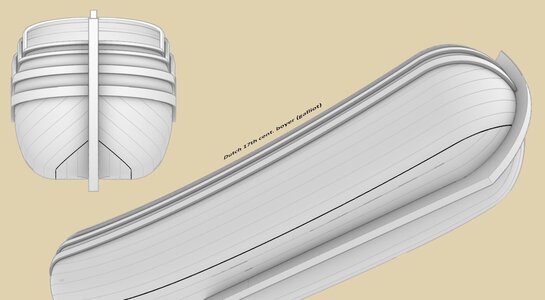
In my opinion, the sharp kink of the "flat" edge is not only unnecessary, but may be actually self-destructive of the effect you intend to achieve. Because somewhat paradoxically, if it goes particularly wrong, it might even force you to lay the planking boards parallel to the wale at the bow (which you don't want, as I understand it). Not to mention the unnatural shapes, which will cause a lot of trouble in execution and will not look convincing at all.
It's true that at the stern of the
Batavia 1628 some very short boards were laid, cut in an 'L' shape. But that's not quite the right comparison, because in this particular case these short 'L' planks connect the hull sides to the flat surface of the square-tuck stern, and the builders’ aim here was purely to cover the cross sections of the wood (normally exposed in square-tucked ships intended for European waters only), in order to make it immune to the particularly destructive elements in the tropics (quite successfully, as can be judged from the wreck). And, as can be expected, this 'bend/cut' is not in a plane parallel to the planking, but in a perpendicular plane, as below.
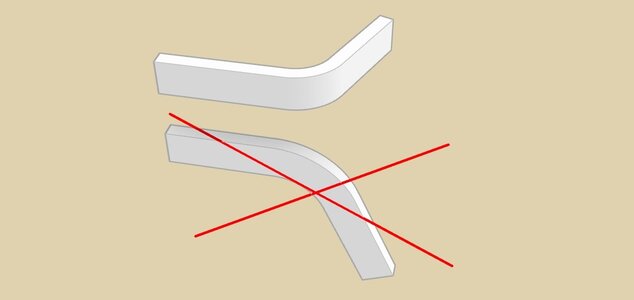
I agree that archaeological finds of large vessels such as fluits are not particularly helpful when it comes to this aspect. Yet a quasi-technical drawing by Adam Silo from „your” period has survived, which shows a sample shape of the outer edge of the „flat” in a classical fluit (white plane). The smooth, rounded contours at the bow area may be clearly seen in the view from below.
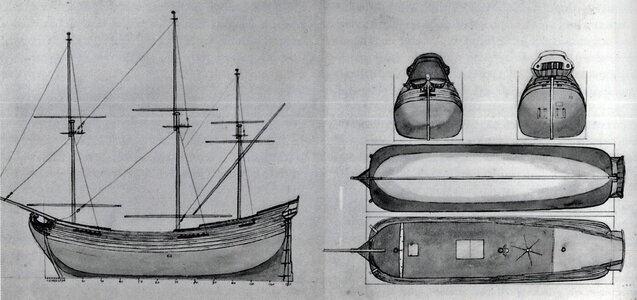
Ab Hoving's reconstruction drawings of the VOC 1697 ships, based on precise co-ordinates from the VOC Resolutie of this year, as well as period iconography (which you may know better than me, by the way), do not suggest such sharp kinks of the „flat” at the bow, quite the opposite.
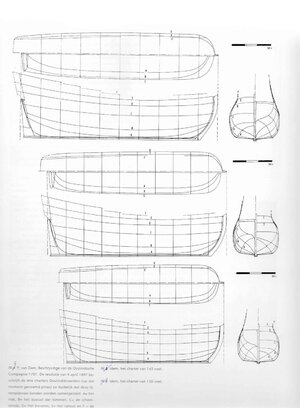
Uff, really, there was so much work to do preparing this comment that next time I think I'll already take an example from more sympathetic users than me and, instead of suggesting something, I'll just limit myself to an encouraging nod. Anyway, you have been warned and now the decision is yours, as is the „responsibility” for the results.

.
